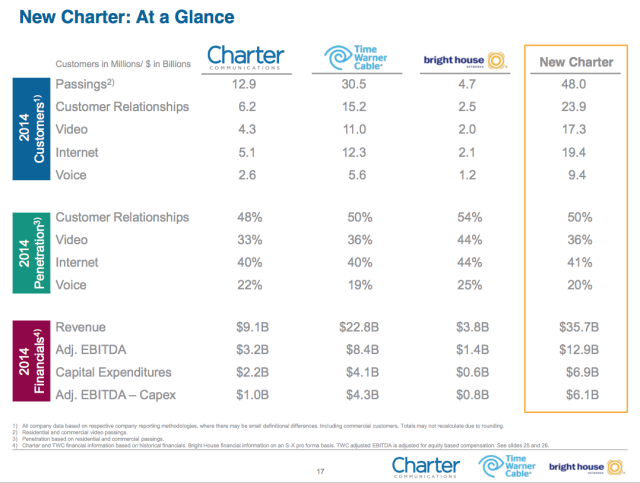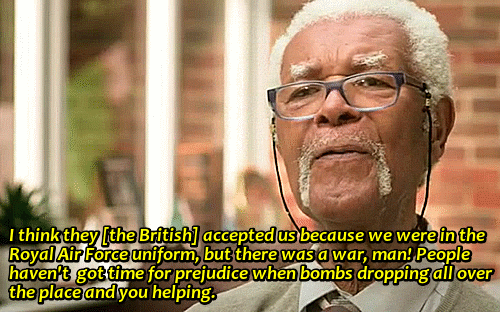It has been difficult to witness: the launching of a systematic campaign of harassment against a student at Goldsmiths, Bahar Mustafa, who is currently Welfare and Diversity Officer for the Student Union. I am writing this post to express my solidarity with Bahar Mustafa. I also want to use the occasion to try and make sense of what has been going on: to ask why and how this story came to circulate the way that it did. One of my standpoints is that doing diversity work – the work of trying to transform institutions often by opening them up to populations that have not previously been accommodated – gives us insight into the very mechanisms of power. We learn how things are working from what happens to those who challenge how things are working.
I will not be citing any of the materials written against Bahar directly apart from the original story and one sentence from a petition. I have no wish to elevate these materials by analysing them as if they offer coherent arguments (they do not). Nor would I engage with anyone directly who has participated in this campaign because it needs to be named for what it is: harassment. And by ‘harassment’ I mean something quite precise. The word ‘harass’ derives from the French harasser ‘tire out, vex’ possibly from Old French harer ‘stir up, provoke; set a dog on.’ The campaign against this student is aimed to provoke or stir up trouble precisely by attempting to wear down and tire out not just this student but all those whom she comes to represent: BME people, women and queers who are not willing to accept their place.
This post is my case.
I will try and account for what we might call the inflationary logics at stake; how these materials through amplification and distortion, work to create a profile that has little trace of any origin. The details of the situation were quickly discarded as the details did not matter. Reality did not matter. The story is about the creation of a profile of the ‘feminist student radical’ as the one we can dismiss (or who in fact should be prosecuted) because she threatens ‘our place’ with this ‘our’ being premised on a weak identification between unnamed students who could not attend an event and endless audiences who are (encouraged to be) outraged on their behalf. Rather like the earlier case discussed here, which exercised the figure of the censoring student, a profile is created, which rests on flimsy evidence, because it allows a dismissal of the challenge made over who has the right to occupy space by those who are being challenged. (1)
The original story posted by a student at Goldsmiths in Tab opens with the line: ‘The event says “if you are white, please don’t come”’ (2). Of course, events don’t speak for themselves. I think we learn how the event is given the status of a subject. The reporter wants a subject who can be written against. He then writes: ‘it was supposed to a gathering to celebrate racial unity and protest against inequality. So imagine the horror when organisers of an anti-racism event BANNED men and white people from attending.’ In the first instance, the implication is that a request has been made by the event itself (‘please don’t come’). In the second, this request from an event becomes a ban from the organisers. The reporter then uses a screen capture of a facebook status update, written very casually, as is the usual style of facebook updates, asking men and white people not to come to the event but also suggested that people invite ‘loads of BME Women and non-binary people.’ (3) Already: what a muddle. Within one short paragraph, we have clear evidence of an inflationary logic: a request for a group of people not to attend an event has become a BAN against those people attending. It is this word ‘ban,’ which is a clear distortion of the wordage in the quoted material (that is, the evidence provided by the story), that is then picked up and put into circulation and recited endlessly.
Pick it up; amp it up.
Now: we need to be precise. To ban someone is to forbid them from doing something. The request made was quite self-evidently not a ban; it was not written in that language. In fact the request is worded as an appeal to a group of students not to attend something (hence the use of the word ‘please’). I think the use of the word ‘ban’ is strategic not only because it allows a narrative to be put in place (white people and men are being prohibited from doing something they wish to do) but because it then allows an association with the organisers of an event and the law: a casually written informal facebook status update is translated into an official policy or mandate.
Before I move on I want to pick up on another part of that appeal or request that has not been mentioned much in the coverage: to invite ‘loads of BME, women and non-binary people’. I know exactly what is being registered by this double appeal: we want more of some and less of others. I can translate this for those of you who are not following: this is ‘really’ a request not to have an event dominated by white men. Why make this appeal? Because so many events, including diversity and equality events, end up being dominated by white men not only in a numerical sense (sometimes not in a numerical sense) but because that group tends to be more dominating in how they occupy spaces (including conversational space). Indeed I have even attended events set up for BME people that end up being dominated by those who identify as white, and who often take up all the space because they are keen to demonstrate their knowledge (whitesplaining), or their anti-racist credentials.
Let’s slow the argument down. The original article adds: ‘there is a huge difference between holding exclusionary ‘BME only’ events and the long-standing culture of open to all events which cater specifically toward BME and female students’. A contrast is set up between events that are exclusionary and events that are ‘open to all’ but that cater specifically for BME and female students. What does it mean to cater for BME and female students in an open event? What would such catering would be? What if BME and female students want events that cater for them by being organised by and for them? Who can decide what it means to be catered for? Surely those being catered for?
Of course the event we are talking about was not ‘BME only’ (the language of ‘banned’ has allowed that to become background assertion) but we can put that point to one side.
Let me state what should be obvious to anyone who knows anything about equalities. This story should not even be controversial! Since changes to the equalities legislation (dating as far back as 2000 with the Amendment to the Race Relations Act) equality and diversity have been understood as positive duties under law. Universities as well as other public institutions no longer simply have a negative duty to fight discrimination but a positive duty to create a more equitable environment. Many universities have in the last 15 years set up networks for minority students and staff as part of their diversity and equality policies. My own college has been a bit slow off the mark: but we are hoping to set up such networks for staff. Why do we do this? Because such networks enable us to redress already existing inequalities within the sector. How so? It is quite simple really: they enable staff and students who have been disadvantaged because of their membership of a social group to share experiences; to support each other; to build relationships and connections that help them to navigate their way through institutions that are, to put it mildly, not organised to ease their progression.
As I have been exploring on this blog, power often works through or as a support system: the existing networks that enable some people to progress more easily than others not because of what they do but who they are (this ‘who’ is an ‘institutional who’). Equality work thus often involves the creation of alternative support systems. Much equality work has been about organising BME student and staff groups, women’s groups, LGBQTI groups as well as events that cater specifically for these groups: and it has been so for a long time.
None of this is radical or new.
How does this case become newsworthy, then?
For this story to become a story, to be newsworthy, certain words have to acquire a function: white people/men have to be understood as having been banned in order to reframe event as ‘exclusionary’ and in various articles as ‘separatist’. Of course the word ‘separatist’ is sticky; in the UK, all-white events and spaces, which are common, are rarely described as separatist; BME communities who ‘live amongst themselves’ usually are. Separatism is a word that tends to fall on minorities rather than on elite or privileged communities who use walls, capital, tradition or habit to restrict their spaces/keep them white.
We learn from how things tend to fall.
We call it a tendency.
Perhaps we do have to explain why BME groups and women’s groups are necessary. The work of explanation can take a lifetime: it can be exhausting because you are ‘having to explain’ the necessity of these groups to those who have no experience of why they are necessary.
When I was based in Women’s Studies, I would receive letters that basically stated: Women’s Studies is sexist. Why isn’t there Men’s Studies? Why? Because the University is Men’s Studies: because the traditional disciplines have defined their objects (and organised their canons) by generalising from men’s experience.
The project of Women’s Studies is not over until Universities cease to be Men’s Studies. The project for Women’s Studies is not over.
Note what is going on then: a space set up for a group not represented by a university is judged as excluding those who are already represented by the university. The judgment of exclusion is a mechanism for concealing how exclusions already operate.
It is not sexist to have Women’s Studies. Sexism is why Women’s Studies is necessary.
It is not racist to have BME groups. Racism is why BME groups are necessary.
But you might say: what about critical and progressive white men, those who want to be part of this struggle for equality? Being part of the struggle means knowing when to step back. I would not hesitate to step back if there was an event on equality or diversity that was for a minority group that I was not part of. Why is that so hard: there are so many events and spaces that I can go to?
The difficulty some people have in ‘stepping back’ is what is being performed here. In an earlier post on critical racism/critical sexism I mentioned an example of a male student who spoke endlessly in seminars about how men occupied too much space. He was able to see the problem ‘over there.’ He was critical; he understood how sexism can work as a way of occupying space. But he was not able to see that he was himself enacting the very thing he was describing. He was re-enacting the problem in or by the very act of seeing the problem ‘over there’. This example teaches us how the mechanisms of power can be obscured even when we (think we) have identified how they are working. It also teaches us why having spaces for those for whom a problem can never be given the status of something ‘over there’ is necessary. Because otherwise, when you create spaces to challenge power, you end up watching what you are trying to challenge being re-enacted right in front of you. Those who think of themselves as critical and progressive, or those who think of themselves as having some intrinsic right to be wherever they wish to be, are often those whose entry into the room would be at the expense of the participation of others.
I have been calling this problem ‘progressive racism’ and ‘progressive sexism’: how racism and sexism progress through those who identify themselves as progressive (4).
I can describe this because I have come up against this myself.
Often.
When we work and study in spaces that are organised around those who you are ‘not’ it is wearing. It might be an experience of harassment. It might be that male tutor who says something inappropriate about your body in class; or the ways in which a tutor addresses the question about theory to the male students; or how the core course has all set readings by male authors. It might be the way other students giggle because your surname is ‘funny’; or having European thought represented as the only thought; or the feeling of being visible or standing out in a sea of whiteness, or how when you are the only student of colour in the classroom (which you often are), everyone looks at you when race comes up as if race has nothing to do with them. Diversity work is the documentation of these experiences. It is the weight of these experiences; it is how they wear you down; how they encourage you to take up less space. Diversity work is also about how we can endure what we document. It is thus about the creation of spaces, networks and events that give us a break, a relief from this labour of being in environment that does not accommodate your being. This is what is meant by ‘safe spaces’: it does not mean no debate and is certainly does not mean spaces that are cosy: it means being able to talk about difficulties with those who can recognise those difficulties. I have used the idea of ‘brick walls’ to explain this: unless you come up against them, these walls do not appear. We need to space to talk about walls with those who have also encountered these walls.
Some diversity work, not all of it, is about organising spaces in which those who share an experience of discrimination by virtue of their membership of a social group can share those experiences. Some diversity work, not all of it, is about organising inclusive spaces in which we struggle with others who identify with the struggle regardless of their membership of social groups. We have to have both; the former does not mean we don’t have the latter, but the latter without the former will get us back to the very place we are trying to challenge. And note: how hard it can be to have those spaces organised around, with and for those who share your experience as a member of a social group that has been disadvantaged. Those who are advantaged often won’t even let you have that!
When we fight not to reproduce the institution, when we challenge power within institutions, we do become, we will become, the object of hostility and derision. Those who object to harassment are harassed all the more. So much harassment is directed against those who challenge harassment. And that is what we are witnessing here: it a campaign of harassment not only against one student but against all students who are fighting for a university that is not organised by, for, around ‘white men.’ And this is why so many of the materials that protest that it is racist to have BME spaces or sexist to have women’s spaces are also making use of violent racist and sexist words and images. This is why people can tweet against students such as Bahar as if they are tweeting for equality, whilst hurling racist and sexist insults, and making death threats. This is why many of those who are protesting supposedly against racism can recirculate racist narratives like ‘go home.’
This is why; this is how.
In fact even the language of anti-racism then become part of the racist vocabulary. Those who are ‘banned’ identify themselves as progressive (they want to attend an event on equality). They are then quickly identified as the victims of racism as well as sexism (white men are excluded). These two modes of identification are related: it is what we could call ‘racist anti-racism.’ In the petition against Bahar, we saw those two modes being articulated as or in one sentence. It is a reference to one case, that of Lee Rigby. Sisters Uncut in their important statement for solidarity for Bahar Mustafa very astutely pick up on this sentence: ‘white people attacked in our streets by radicals.’ Here the racism of the campaign against Bahar comes out. Whiteness is reasserted as ownership: ‘our streets,’ and we can hear behind this, ‘our groups,’ ‘our universities,’ ‘our nation.’ Of course it is always the others who presented as dangerous: as endangering what we assume as ours.
Whiteness is reasserted as ownership.
Ours.
I have now come to the hardest part. Of course, the story was amped up (it was already amped up in the original reporting): the student concerned was put under more and more scrutiny. There is a desire to find evidence to support a belief. And of course, as you would expect, more evidence is found: of a vicious feminist and racist plot against white men.
The story is build around the desire for this evidence.
The most telling evidence was the use of a hashtag #killallwhitemen. Surely there cannot be more evidence than that? Of course there could still be even more ‘amp up’: the use of the hashtag recirculated as a command (#killallwhitemen becomes a speech act ‘kill all white men’ as Amanda Hess shows very well in her reflections on ‘ironic misandry’) such that the student can end up being represented on social media as ‘planning a genocide.’
I think we have learnt from this, if we needed to learn from this, that it is not a good idea to engage in Valerie Solanas style feminist humour on social media (5). We do need to become conscious of how words can sound when they are taken out of context.
But let me do some more explanatory work.
I once wrote a post called ‘white men.’ In this post I argued that ‘white men’ is not only institution, but a set of mechanisms for reproducing an institution. I received a number of responses on twitter that in writing this post I was calling for the murder/death/end of white men. You will note I called for no such thing: in fact if anything the only time I appeal to white men as individuals is to call upon them not to reproduce the institution ‘white men’ through citational practices.
This accusation was not new to me. Feminists who oppose institutions are often accused of violence, and even murder. The institutions we challenge are the same institutions that are upheld by some as necessary for life: family, marriage, and so on. Those who challenge the institutions deemed necessary for life are often those assumed to be willing death.
The basis of some feminist humour, whether you wish to justify it or not, is to redeploy stereotypes of feminists. The murderous feminist is one such stereotype. This hashtag (which was certainly not originated by the student being targeted) was an ironic redeployment of that stereotype. Of course the risk of redeploying a stereotype – to expose the fallacy behind it – is that you will encounter the very thing you expose.
We are encountering that thing.
The figure of the killjoy is premised on a similar conversion. She too begins as a stereotype: that feminists are against happiness; that feminists talk about sexism to mask their unhappiness; that feminists kill joy because they are joy less (6). We convert that very figure into a source of energy. We are quite prepared to kill some forms of joy. I have no doubt it would be and should be harder to redeploy the figure of the murderous feminist. Because, of course, we are not calling for violence. We are calling in fact for an end to the institutions that promote violence. Much violence that is promoted by institutions is concealed by the very use of ‘stranger danger’: the assumption that violence only ever originates with outsiders, the obscuring of domestic violence, violence that happens ‘at home.’
I don’t think we can redeploy this figure without ending up where we started. But we do need to be clear how she started.
Let’s go back to where we started. We are witnessing how power works: power works by increasing the costs of fighting against power. It works by demonstrating these costs often through the systematic targeting of an individual: look what happens to her; it will happen to you.
The message of the campaign is a threat.
And this is also why: diversity work is about sharing the costs of fighting against power.
And this is also why: solidarity matters.
- I hope to write a post ‘against students,’ where I will place these figures alongside each other (and also discuss how some of the critiques of neo-liberalism in higher education rest on another figure of the ‘consuming student,’ whose desires and wants for the wrong programmes are assumed to have caused the demise of the university).
- The student is a former member of UKIP.
- Because Women is capitalised, I think this should read: ‘BME, Women and non-binary people.’
- I hope to write a blog on ‘progressive racism’ in the near future.
- This is a reference to Valerie Solanas’s Scum Manifesto (1967).
- See my book, The Promise of Happiness (2010) for longer discussion.

























/cdn0.vox-cdn.com/uploads/chorus_asset/file/3726972/tic_tac_toe_1.0.png)
/cdn0.vox-cdn.com/uploads/chorus_asset/file/3726974/tic_tac_toe_2.0.png)
/cdn0.vox-cdn.com/uploads/chorus_asset/file/3726976/tic_tac_toe_3.0.png)
/cdn0.vox-cdn.com/uploads/chorus_asset/file/3726978/tic_tac_toe_4.0.png)
/cdn0.vox-cdn.com/uploads/chorus_asset/file/3726980/tic_tac_toe_5.0.png)





























